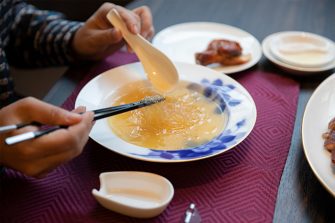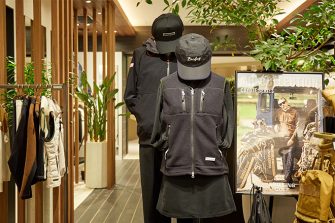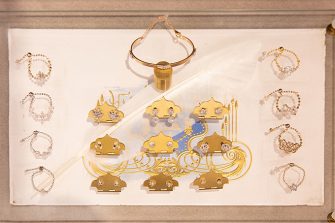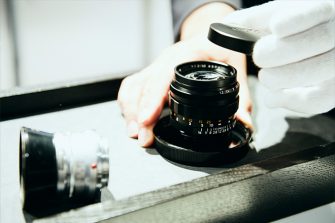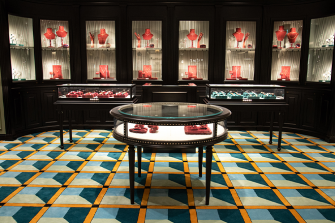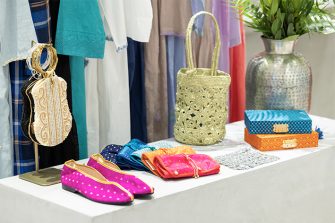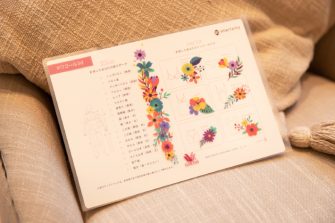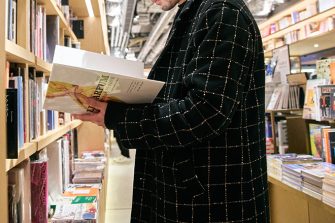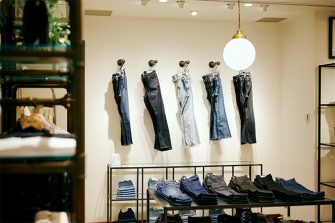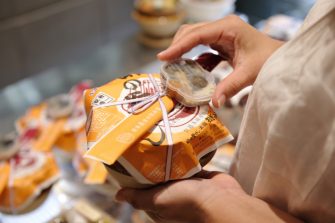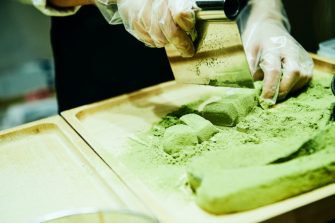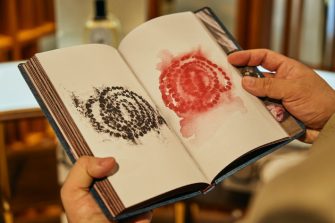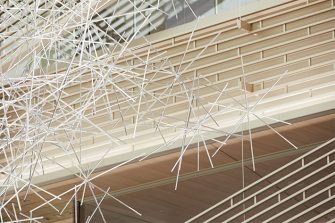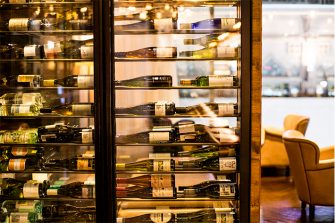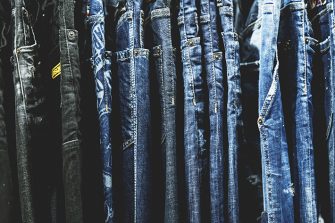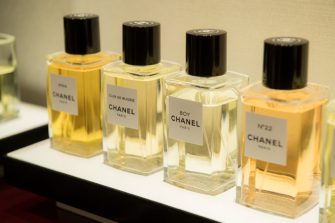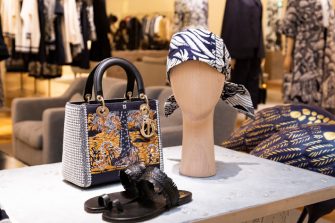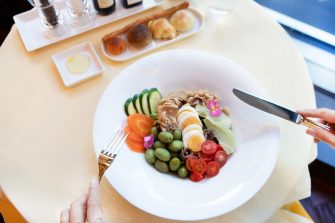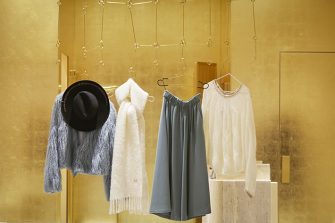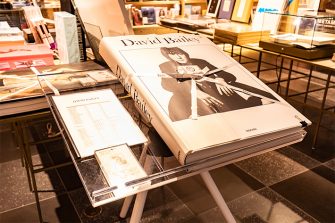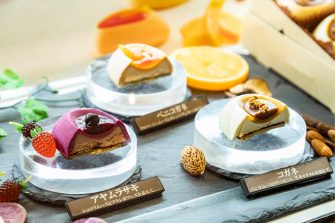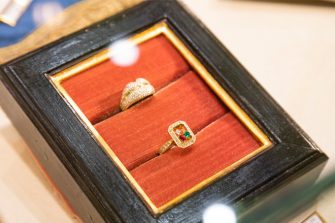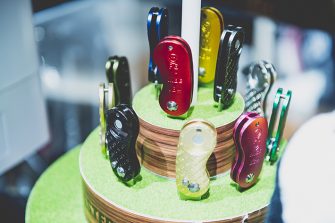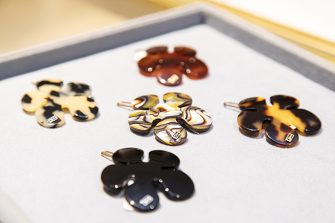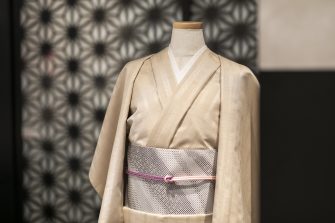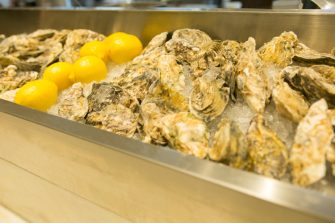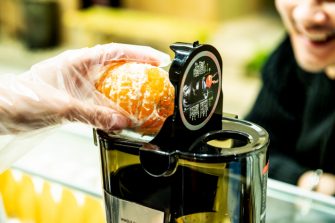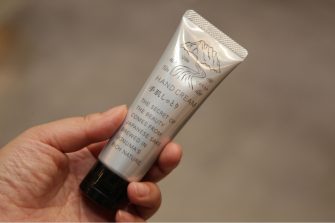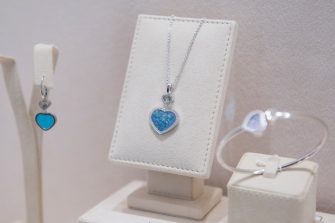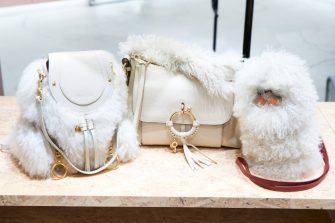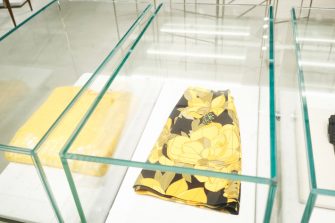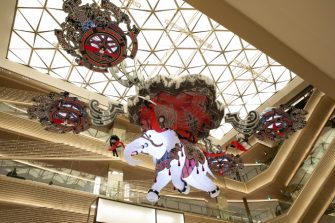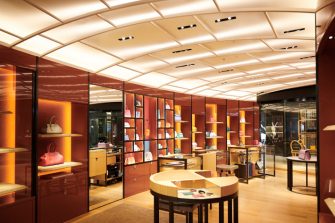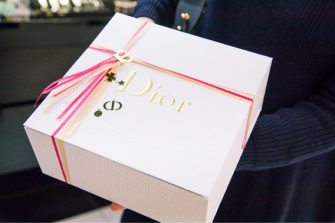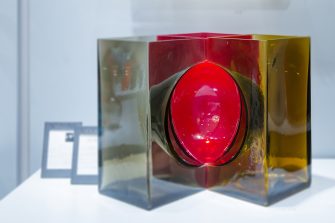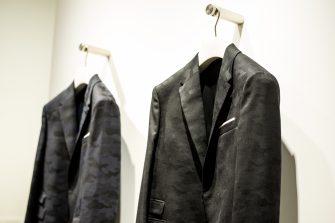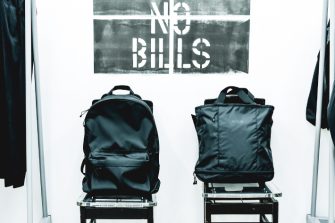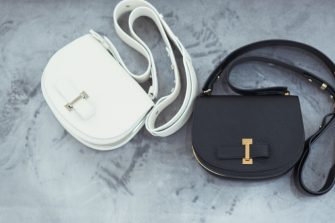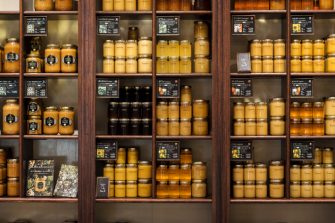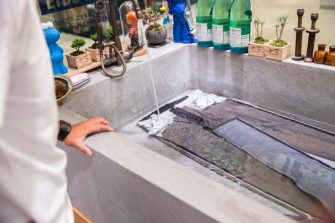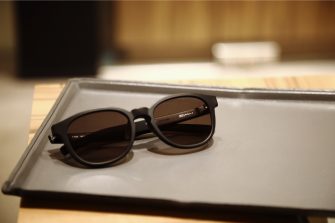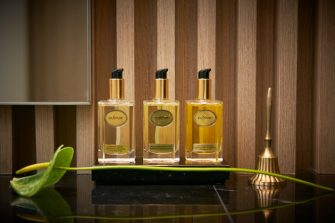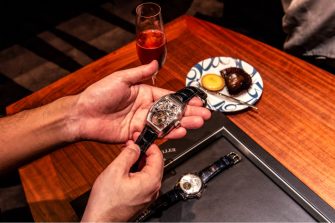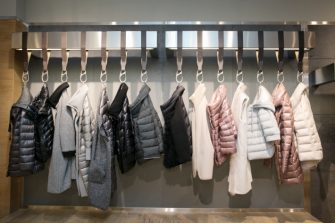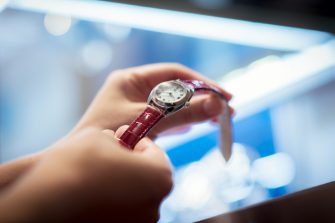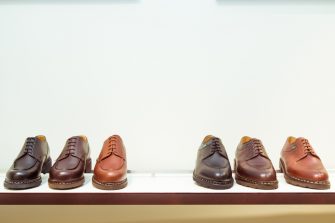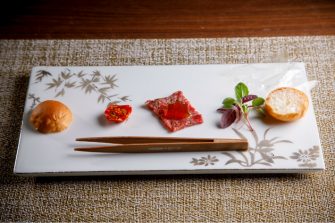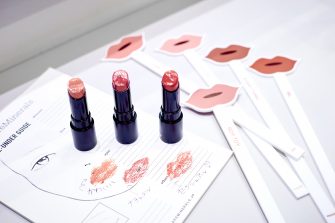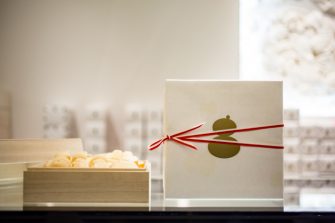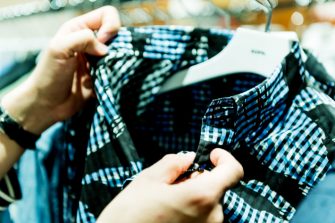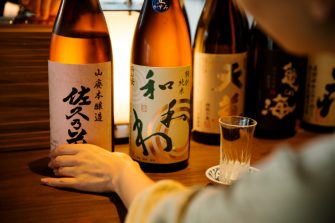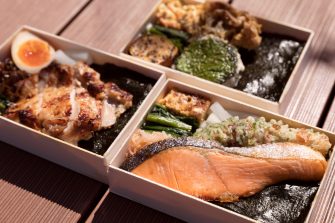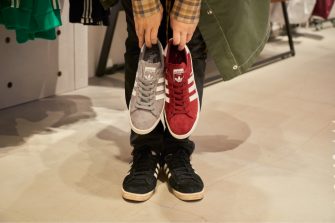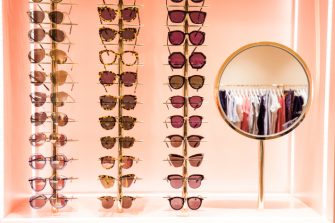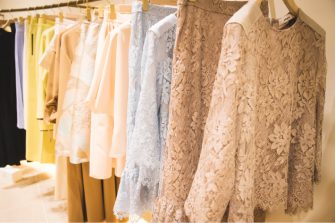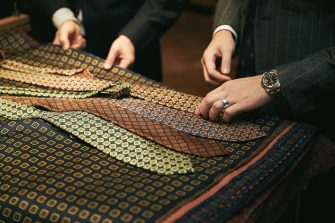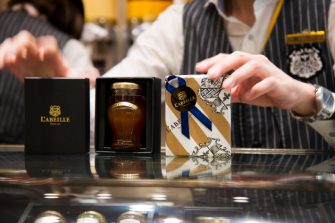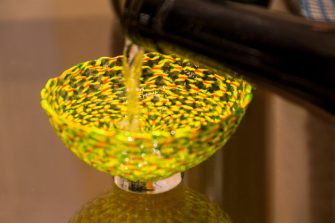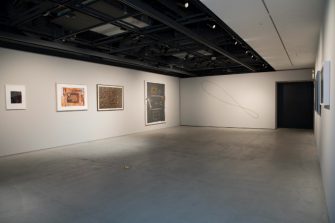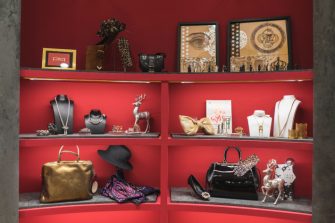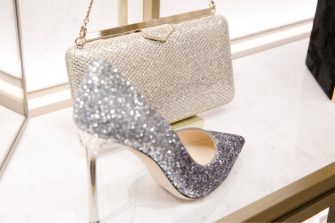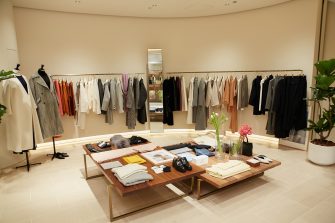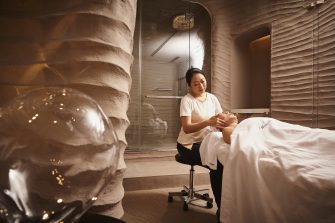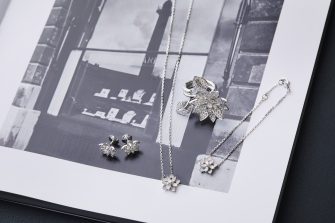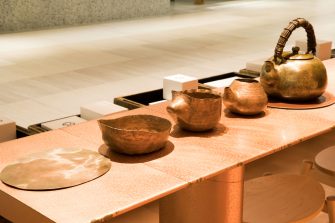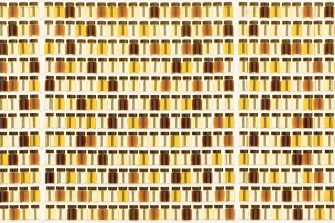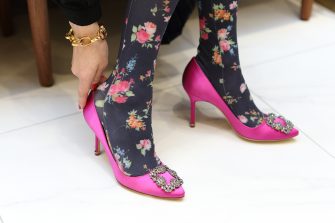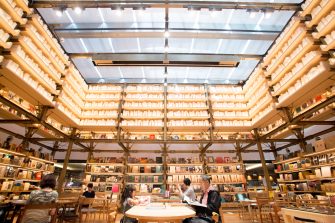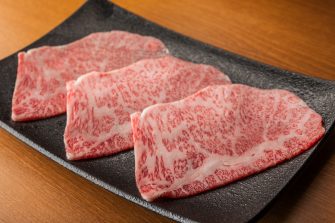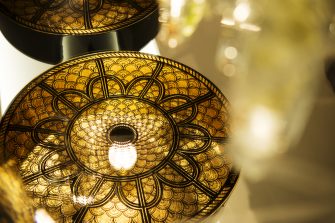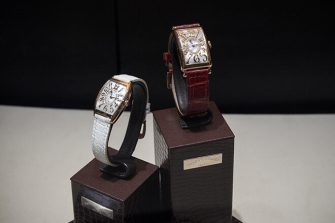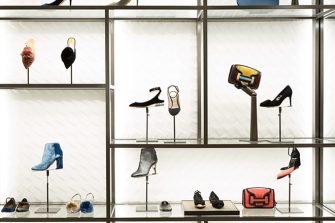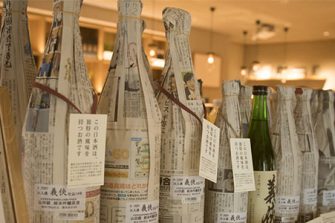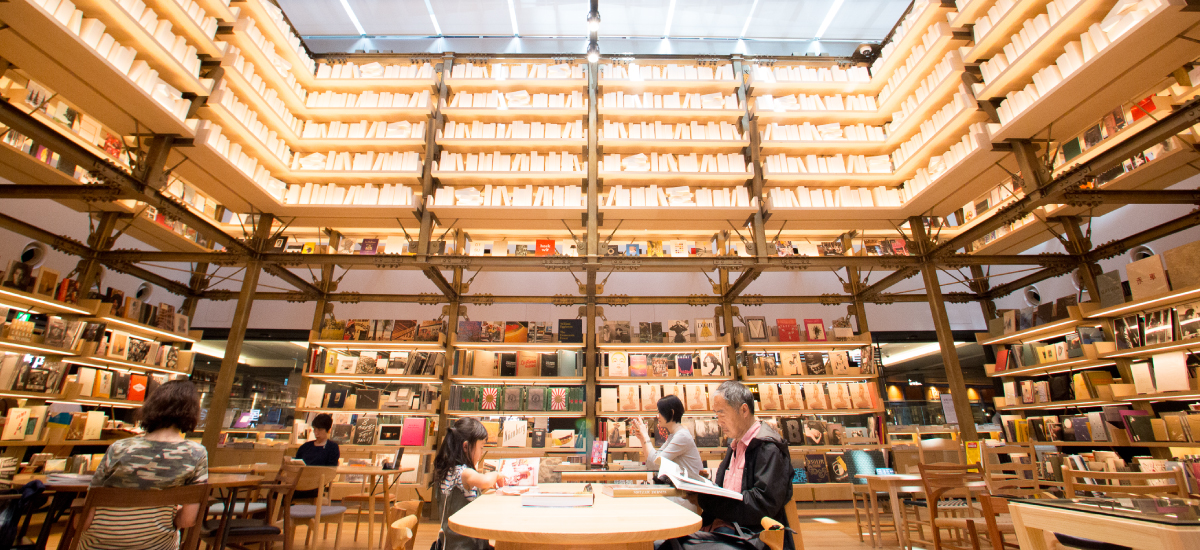
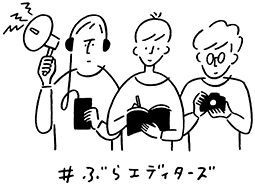
GINZA SIX EDITORS
时尚、珠宝&手表、生活方式、美容、食品…
精通各种类型的个性丰富的编辑们,在GINZA SIX上闲逛
记述走路发现的乐趣。
艺术发源地银座DNA的文化景点巡游 A Cultural Tour of Ginza’s Artistic DNA
富田秋子
GINZA SIX EDITORS Vol.7(Lifestyle)
虽然有点唐突,但是因为书和唱片的重量而担心地板脱落的人有多少呢?至少,从学生时代开始就在摄影杂志和文化杂志上写文章的自己,从开始一个人生活开始就已经是“担心地板的派”了。这次向大家介绍GINZA SIX的文化景点,向所有寻求文化刺激的人推荐GINZA SIX的文化景点。
首先,去六楼银座茑屋书店。从“橹”中获得灵感的活动空间,以及介绍适时作品的艺术画廊等,到处都有艺术展示的店内正是美术、文化的一大发源地。
其中最大的看点是平时备齐6万册的艺术书籍。然后,去这里的话最先走的就是古书的专柜。珍贵书籍的充实感总是让人吃惊,但是在访问的这一天,我遇到了那本梦幻的写真集川田喜久治的《地图》(美术出版社)。
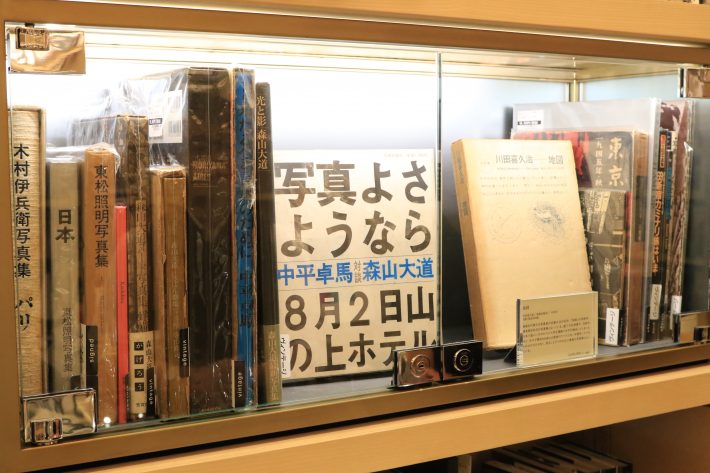
1965年只发行500部的初版本,正是复古写真集的最高峰。这本书可以说是日本艺人书籍的开端,捕捉到原子弹爆炸圆顶墙壁上的“污点”和特攻队员肖像照片等的高统性照片群,设计成全页观音开的崭新形式。负责装订的是杉浦康平。研究亚洲图像,为图书设计带来革新的日本代表性图形设计师。
当然,对应实时动向的阵容也不遗余力。摄影家志贺理江子是通过照片探索生与死、光与影、看不见等人类根源的二元性的最重要作家之一。今年夏天在香川县举办的展览会“志贺理江子盲目”(丸龟市猪熊弦一郎现代美术馆),作为作家展示了更大的进展,受到了极大的关注,这里还设置了相关书籍《Blind Date》(T&M Projects)。经营书店少的书也备齐了。对书店的信赖是在这一点上决定的。
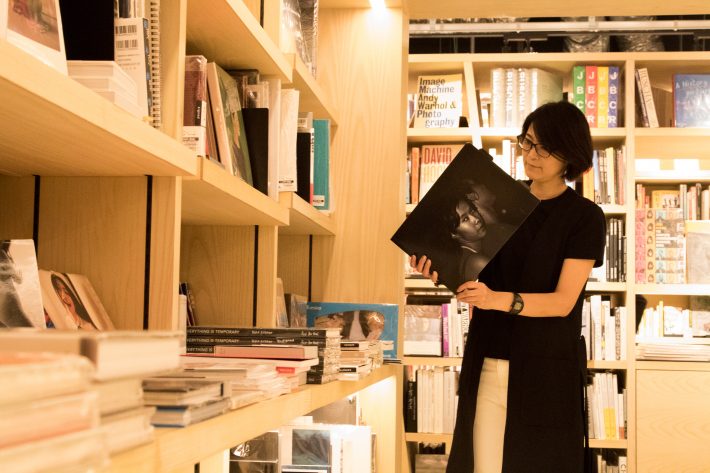
艺术书籍齐名的“艺术街”入口处,设置了大型书籍特设角。可以说是歌舞伎照片的决定版的篠山纪信《KABUKI by KISHIN》(限定1000部)、收录了《名胜江户百景》初摺的《广重名胜江户百景》特装版(限定200部喜欢的作品的复制原画1张)是只有银座茑屋书店才能买到的限定本。向世界展示日本的审美意识。这种志向表现在使用玻璃柜、装饰架、平台等各个地方展开的特集和展示中的每一个都有表现。
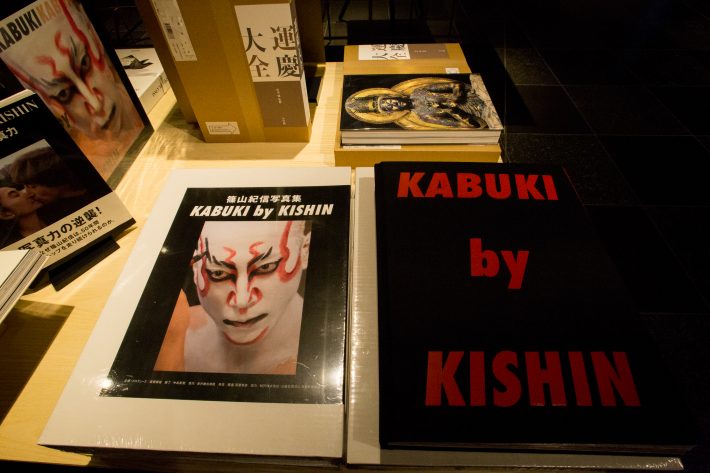
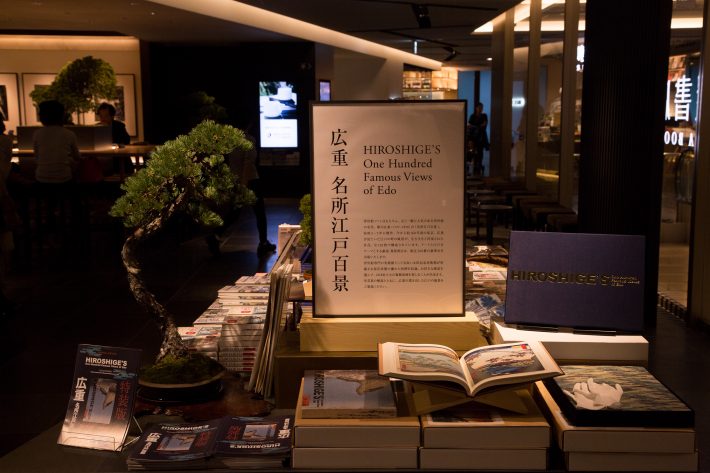

接着,去一个下面5楼的莱卡GINZA SIX。不用说,德国引以为豪的照相机·望远镜的名门品牌莱卡。罗伯特·凯帕、亨利·卡尔蒂埃(布莱森)等众多摄影家与莱卡的摄影机一起生活,抓住了许多“决定性的瞬间”。
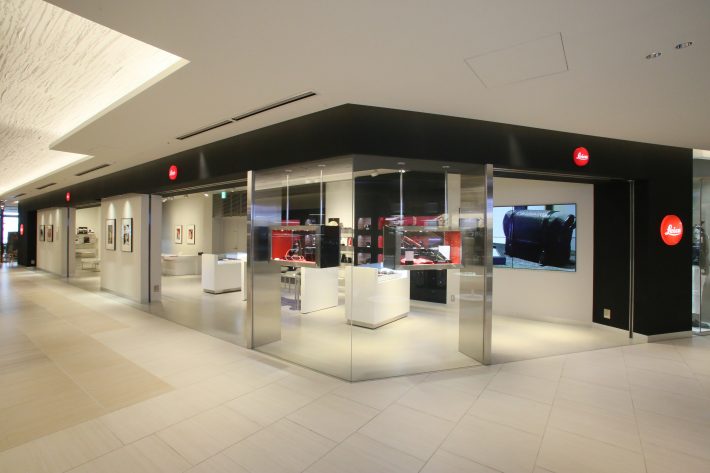
这里是设有摄影展空间的开放店铺,现在乔恩·戴维摄影展“Kosen”正在举办中(~12月13日)。作为日本古摄影家而闻名的英国摄影家,在15岁的舞妓·小扇作为艺妓成为独当一面的5年时间的精心作品。
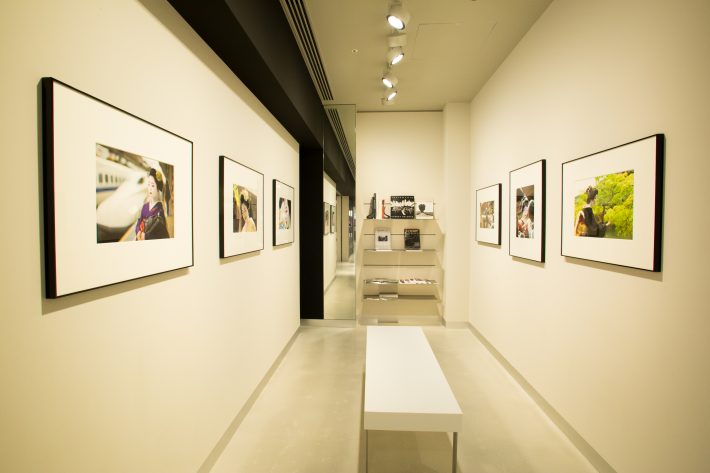
首先要检查莱卡史上第一台速摄像机“莱卡索福特”。虽然外表可爱,但还是具备双重露光和长时间曝光等创造性摄影模式的优等生。
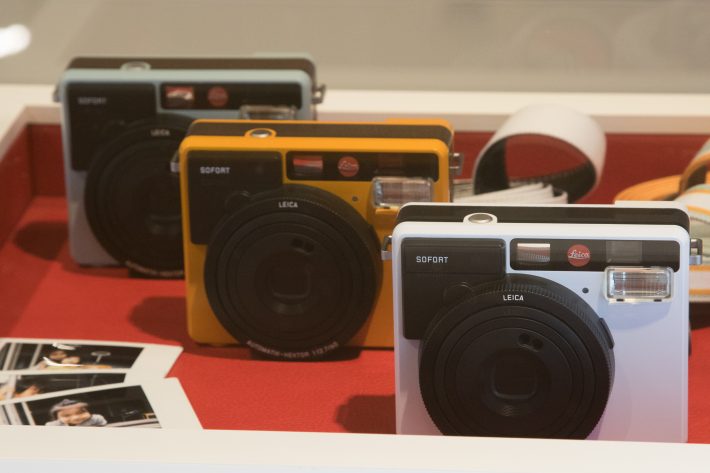
难得的机会,照相机·粉丝垂涎的莱卡M型照相机也拿在手里看看。如果说这个重量和触感,能让人感觉到牛皮士般的感觉是夸张的吗?
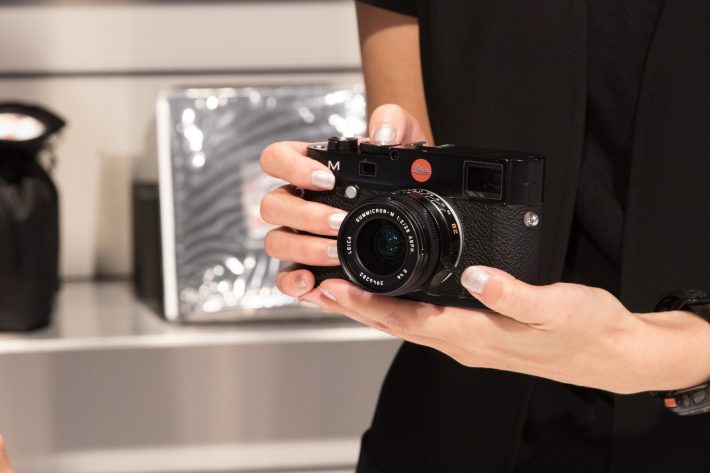
另外,由于“Kosen”展的关系,在中央架子上摆放的是通常只在莱卡京都店经营的京都传统工艺的收藏品。七宝纹的扇子虽然是老字号宫胁卖扇庵亲手制作的限定品,但价格设定为一瓶香槟的价格。印有以京友禅和服闻名的千总的京友禅图案的丝绸质地作为皮革内张使用的奢侈荷包也在一万日元左右,摆放着作为礼物也很受欢迎的物品。

结果,这一天什么都没买就回去了……在银座常春藤书店发现的艺术新潮1989年7月号(特集《摄影家选出的昭和照片BEST10》)。没想到在银座的正中央,能遇到年轻时错失买的杂志。

体现了日本的精华,同时也是精细艺术发源地的银座的DNA,以明确的意志继承下来,在所有次元展开。但是,不是单纯的追随,而是积极地捕捉现在进行形式的信息,并且自己也不断挑战,才能感受到创造性的气概。在日常行动范围内拥有这样的景点,可以说是人生更加丰富的秘诀之一吧。
Text:Akiko Tomita Photos:Hiroyuki Takahashi Edit:Yuka Okada
Can I ask a quick question? Are you someone who worries the weight of your books or records will damage the floorboards? Since I moved out on my own, as someone who’s written for photography and culture journals since my student days, I know the feeling. So, today, for all my fellow culture addicts and everyone else who seeks out what’s new and fascinating in the world of culture, I’d like to recommend the cultural space at GINZA SIX. Allow me to proceed with my introduction.
First, let’s head to Ginza Tsutaya Books on the sixth floor. Here, you’ll find an event space with a high vaulted ceiling inspired by watchtowers, an art gallery showcasing timely works, and a series of artworks exhibited at various points throughout the store. All of this merges to create an important site for transmitting art and culture.
Among the store’s major highlights is a 60,000-volume collection of art books. When I visit the store, I immediately head over to the used-book area. I’m repeatedly awestruck by the vast range covered by the stock of invaluable books here. My lucky find today was a rare book of photos by Kikuji Kawada entitled “Chizu” (published by Bijutsu Shuppan-sha).
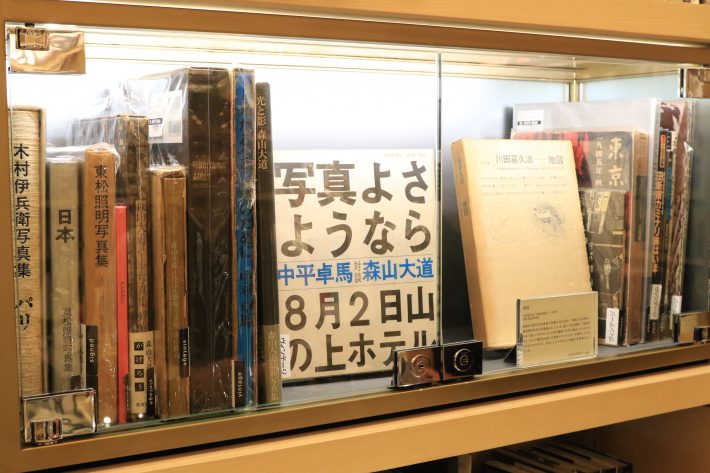
This first edition, of which only 500 copies were printed in 1965, is the pinnacle of vintage photo collections. It all but inaugurated the artist book in Japan. The high-contrast photographs, including the shadows seared into the walls of Hiroshima Peace Memorial (Genbaku Dome) and portraits of kamikaze pilots, were designed in a novel format in which all the pages are gatefold. The binding was developed by Kohei Sugiura, the renowned Japanese graphic designer who studied Asian iconography to create highly innovative book designs.
The store’s lineup of books that follows current trends is also exceptional. Photographer Lieko Shiga is a major artist who has pursued, through photography, the fundamentally dual nature of human beings—life and death, light and shadow, the seen and the unseen. “Lieko Shiga Blind Date,” an exhibition of her works held this past summer at the Marugame Genichiro-Inokuma Museum of Contemporary Art in Kagawa Prefecture, drew considerable attention and provided a glimpse of Shiga’s continuing evolution as an artist. The bookstore carries a few copies of “Blind Date” (T&M Projects), the book accompanying the exhibition. The store also carries books carried by very few other bookstores. Loyalty to a bookstore is built on things like this.
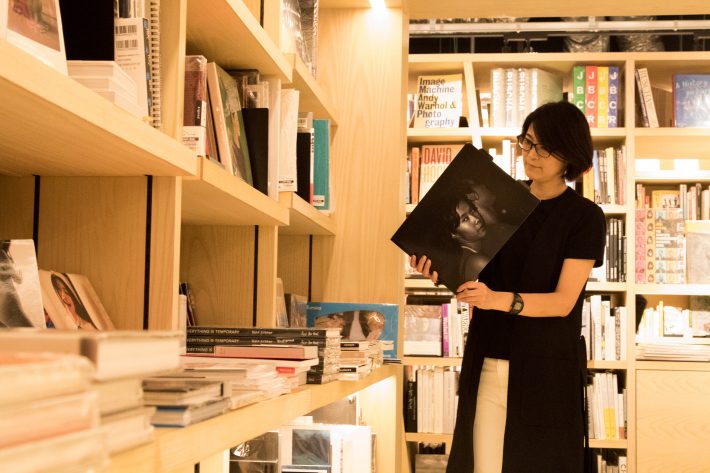
The entrance to “Art Street,” the common name given to the art books section, features a special area for oversized books. Kishin Shinoyama’s “KABUKI by KISHIN” (limited edition of 1,000 copies), considered the standard for Kabuki photography, and a special edition of “Hiroshige’s One Hundred Famous Views of Edo” with the first printings of the “Famous Views” (limited edition of 200 copies; with one reproduction of a favorite work) are limited editions available only here at Ginza Tsutaya Books. To transmit Japanese aesthetic perspectives to the world—each of the collections and displays scattered throughout the store in glass cases, in cabinets, and on flat display platforms speaks to this mission.
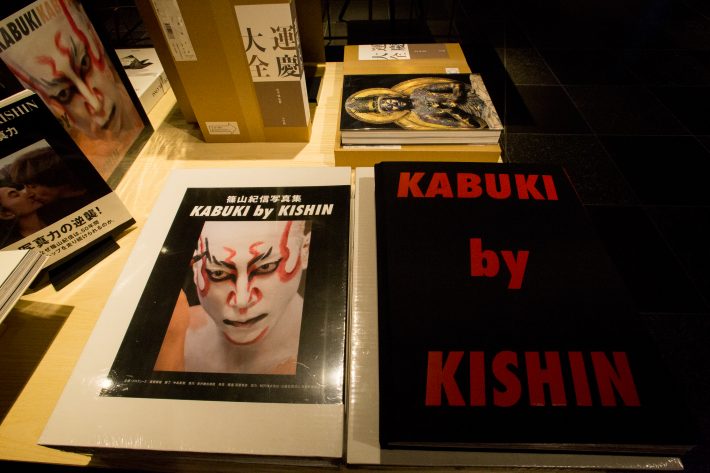

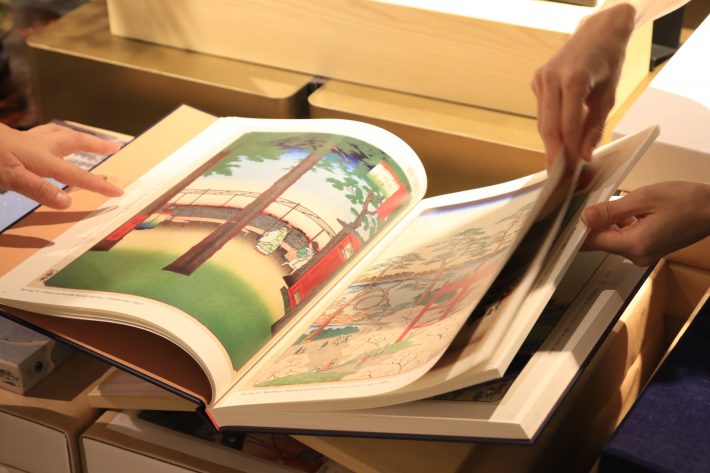
Let’s go down one floor to the fifth floor and check out Leica GINZA SIX. Leica, obviously, is the renowned brand of German cameras and binoculars. Many photographers, including Robert Capa and Henri Cartier-Bresson, have lived with their Leica cameras and captured numerous decisive moments.
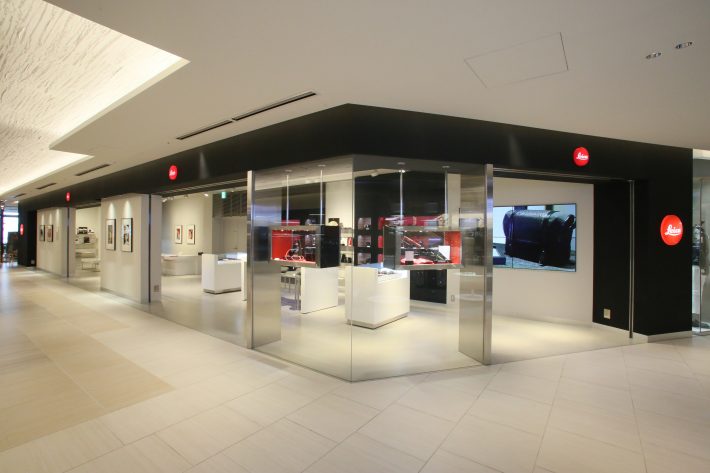
The store is based on an open floor plan that includes a photo exhibition space. The current exhibition, “Kosen,” features work by John Davies (through December 13). Davies, an English photographer, is also well-known as a collector of vintage photographs of Japan. The remarkable work gathered here tracks the progression of a 15-year-old apprentice geisha, or maiko, over five years, as she becomes a full-fledged geisha.
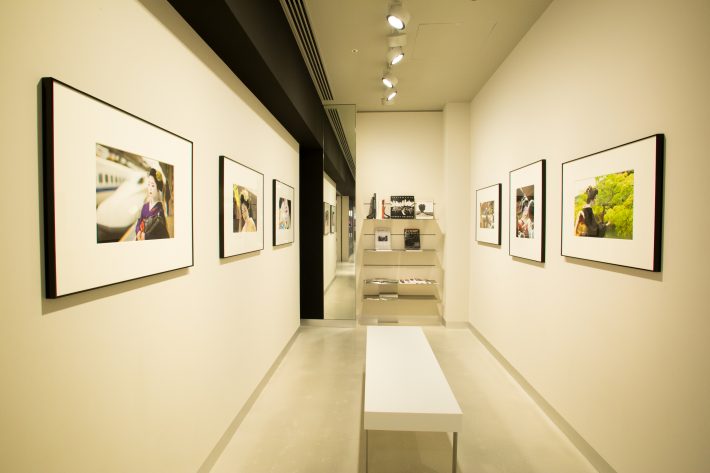
Let’s start by checking out the Leica Sofort, the brand’s first-ever instant camera. It looks cute, but it also features real-world working chops, like creative double-exposure and time-lapse-exposure modes.
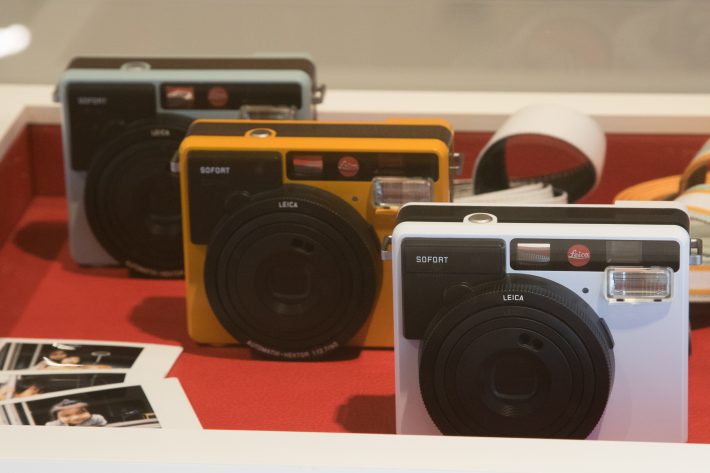
And since we’re here, let’s pick up and hold the camera that makes any camera fan’s mouth water: the Leica M. The heft, the texture of the surface, the austere body—it’s hardly an overstatement to say one perceives the presence of craftsmanship in one’s hands.
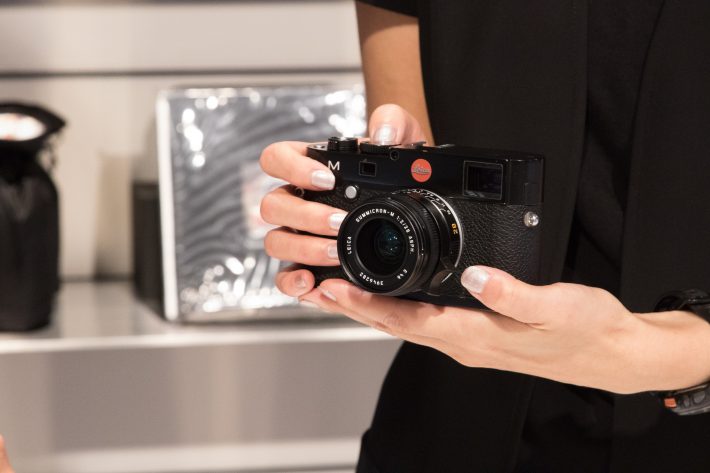
Next, on the center shelves, in a tribute to the “Kosen” exhibition, are items produced in collaboration with traditional Kyoto craftspeople. These products are normally available only at the Leica Store Kyoto. The cloisonné-patterned folding fan is a limited-run item produced with traditional maker Miyawaki Baisenan and priced like a bottle of champagne. We also find here a drawstring pouch of leather, lined with kyoyuzen-patterned silk from famous kimono maker Chiso, priced around 15,000 yen. These items would make spectacular gifts.
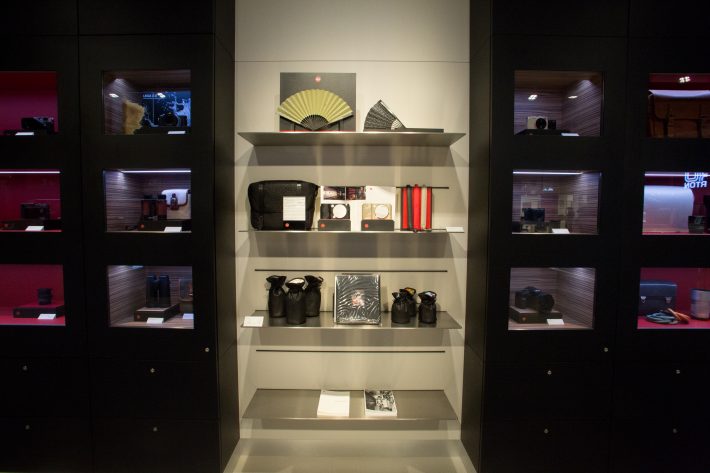
Nevertheless, I ended up going home empty-handed… just kidding! I’m not sure that’s possible. Today, I picked up the July 1989 issue of Geijutsu Shincho magazine (Best 10 Showa Era Photos, as Selected by Photographers), a find I came across in Ginza Tsutaya Books. I really had no idea I’d come across a magazine, here in the middle of Ginza, that I’d missed the chance to buy in my younger days.
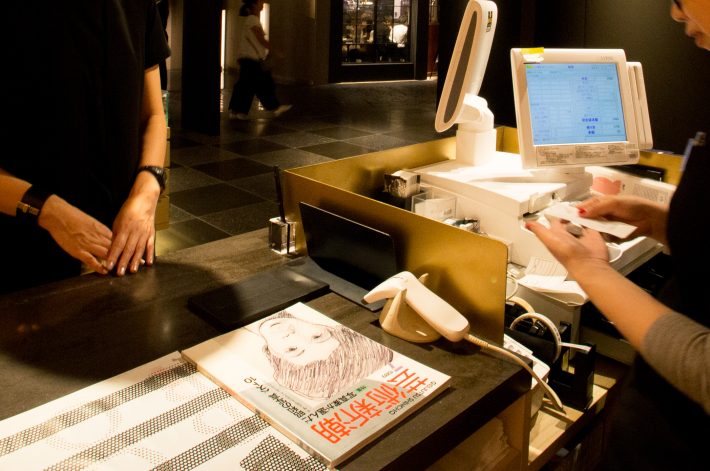
In its DNA, Ginza has long exemplified Japanese sophistication while also serving as a center for fine art. GINZA SIX clearly and purposefully inherits and deploys this tradition in all dimensions. But it’s not merely following tradition; there’s a creative grit I sense in its acute attention to current information and willingness to tackle new challenges. Having a place like this within your daily repertoire is one of the secrets to bringing more enrichment to life.
Author: Akiko Tomita Photographer: Hiroyuki Takahashi Editor: Yuka Okada
富田秋子
编辑器/作者。经过美术馆工作,进入出版界。在文化杂志上亲自制作写真集、街头艺术等特集,独立。现在,一边参与国内举办的国际摄影节和企业文化媒体事业,一边向以“VOGUE JAPAN”“Numero TOKYO”为首的媒体投稿艺术相关的报道。


